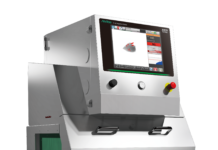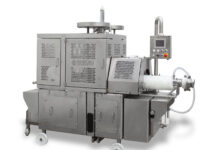 – Lactic bacteria, lactic acid and bacteriocins. Lactic bacteria have shown adverse effects towards various pathogenic bacteria. In a recent survey, some strains of lactic bacteria were inoculated together with Listeria monocytogenes in sausages, causing them logarithmic reduction compared to control (sausages with Listeria but without lactic bacteria) after 8 weeks of refrigerated storage. A very good inhibitory effect was also obtained by adding to the sausage’s mix an extract from cultures of lactic bacteria free from cells but rich in lactate and diacetate. It is also possible to contemporarily use lactic acid and lactic bacteria cultures, since the latter are not inhibited by this substance and by its low pH (4). In addition to lactic acid, some strains of lactic bacteria are able to produce bacteriocins, natural protein substances with real antimicrobial power that may have interesting applications as food preservatives (5). Nisin is perhaps the most popular substance among bacteriocins, for some time approved for many applications in the food industry.
– Lactic bacteria, lactic acid and bacteriocins. Lactic bacteria have shown adverse effects towards various pathogenic bacteria. In a recent survey, some strains of lactic bacteria were inoculated together with Listeria monocytogenes in sausages, causing them logarithmic reduction compared to control (sausages with Listeria but without lactic bacteria) after 8 weeks of refrigerated storage. A very good inhibitory effect was also obtained by adding to the sausage’s mix an extract from cultures of lactic bacteria free from cells but rich in lactate and diacetate. It is also possible to contemporarily use lactic acid and lactic bacteria cultures, since the latter are not inhibited by this substance and by its low pH (4). In addition to lactic acid, some strains of lactic bacteria are able to produce bacteriocins, natural protein substances with real antimicrobial power that may have interesting applications as food preservatives (5). Nisin is perhaps the most popular substance among bacteriocins, for some time approved for many applications in the food industry.
A further option is represented by the possibility of incorporating the natural antimicrobial and antioxidant substances not in the food, but in its packaging. In this way the sensory impact on foodstuff would be mitigated, without reducing the substance’s preservative power. Packages may release substances to food in different ways: they may be present within specific emitting devices, or be incorporated directly into the plastic film that forms the packaging and from which they are released under control. These special packages are part of the active packaging world, i.e. packaging that is able to change favorably the characteristics and shelf life of the food it contains, e.g. extending its shelf life through release or vice versa absorption of substances, resulting in microbial proliferation prevention. The “interactions” of active packaging with the food must be such that it mustn’t deliberately mask the possible decay of the product. Active packaging is regulated at European level, together with intelligent ones, not only by “framework” Regulation for food packaging safety (n. 1935/2004) and by Regulation No. 10/2011 dedicated to plastics, but also specifically by Regulation 450/2009. Although active packaging is still not widely known on the market (in particular in our country), because of its high cost and the general distrust not only by consumers but also by food industries, research is alive and evolving. Applications that use it to release towards the foodstuff natural substances with preservative and stabilizing effect are those that are currently enjoying greater success.
References
1) Mohamed H.M.H., Mansour H.A., 2012. Incorporating essential oils of marjoram and rosemary in the formulation of beef patties manufactured with mechanically deboned poultry meat to improve the lipid stability and sensory attributes. LWT – Food Science and Technology, 45(1):79-87
2) Zarai Z. et al., 2013. Antioxidant and antimicrobial activities of various solvent extracts, piperine and piperic acid from Piper nigrum. LWT – Food Science and Technology, 50(2):634-641
3) Doménech-Asensi G. et al., 2013. Effect of the addition of tomato paste on the nutritional and sensory properties of mortadella. Meat Science, 93(2):213-219
4) Koo O.K. et al., 2012. Antimicrobial activity of lactic acid bacteria against Listeria monocytogenes on frankfurters formulated with and without lactate/diacetate. Meat Science, 92(4):533-537
5) Zacharof M.P. and Lovitt R.W., 2012. Bacteriocins Produced by Lactic Acid Bacteria – a Review. APCBEE Procedia, 2:50-56



